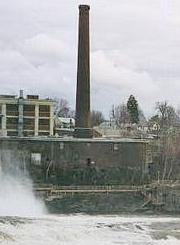 期待已久的哈德遜河(Hudson River) 上游疏浚工程於本月22日動工,在愛德華堡(Roger Island, Fort Edward)附近開始清除通用電氣廠(GE)使用PCB造成的污染沉積物。
期待已久的哈德遜河(Hudson River) 上游疏浚工程於本月22日動工,在愛德華堡(Roger Island, Fort Edward)附近開始清除通用電氣廠(GE)使用PCB造成的污染沉積物。
為期6年的疏浚工程按2006年11月同意判決書之規定由GE承攬,美國環境保護署(EPA)全面監督; 天公作美的話,預計2009年10月完工。
第一階段疏浚工程以每週6天全天候的速度,清除長達6英里介於羅傑島(Roger Island)和湯普森島(Thompson Island)河流之間26萬5千立方碼淤積物和2萬零300公斤的PCB。估計將清達1百80萬立方碼的沉澱物和11萬3千公斤的PCB。
河道淤積物由大型平底船運載到愛德華堡Champlain運河邊上的脫水厰。然後把沉澱物中的水擠出,按飲用水標準處理後,再回置運河内。其餘含大量PCB沉澱物則由列車載運到德州一合法廢棄物掩埋場處置。
位于Andrews縣佔地1千338英畝存處場的經營者是控管廢棄物專家。該厰擁有處理、貯存各式危險有毒、輕微和低混合放射性物質含量廢棄物的執照。
但是,德州的環保人士仍要求提供一份環境評估聲明書(Environmental Impact Statement),認爲在該厰處理PCB廢棄物會造成Ogallala地下蓄水層毒害。其綿延的地下水脈流經包括德州的8個州,儼然是個天然的地下水庫。
美國山巒協會(Sierra Club)協會Lone Star分會化學家Neil博士說:「我們擔心供應德州乾旱地區飲用水和農業用途的含水層會遭受污染。」
「同時我們還關切列車沿線公共衛生和潛藏的環境災害。GE計劃自7月1日開始,用長達一英里的火車每4至5天,運載81個貨廂, 費時6個月。屆時,會用塑膠布覆蓋列車,但列車脫軌狀況下卻完全無用。因此我認爲這些車廂應酌情加以鋼鐵覆蓋物,以防PCB外泄。」
雖然生活環境中仍存在PCB,但實為一種美國停產的混合化學品。對健康的危害包括成人痤瘡樣皮膚、兒童神經行為和免疫功能異常現象。此外,PCB也是動物致癌的因素之一。
據EPA的説法,食用污染河魚爾後人體內累積過多的PBC,才是哈德遜河危及人類健康的主因。
初步階段疏浚工程結束後,先由一獨立專家小組審查結果,並提出建議以供後期施工參考。工程定于2015年完成。
The long awaited dredging of the Upper Hudson River to remove sediment contaminated by PCBs from a General Electric factory began Friday near Roger Island in Fort Edward.
The six-year dredging project will be conducted by General Electric under the terms of a November 2006 consent decree. The U.S. Environmental Protection Agency will oversee all aspects of the work; dredging will continue through October 2009, weather permitting.
This first phase of the dredging project will be conducted 24 hours a day, six days a week and aims to remove 265,000 cubic yards of sediment and 20,300 kilograms of PCBs from a six-mile stretch of the river between Roger Island and Thompson Island. The entire project will remove an estimated 1.8 million cubic yards of sediment and 113,000 kg of PCBs.
Sediment removed from the river will be carried by barge to a dewatering facility located on the Champlain Canal in Fort Edward. There water will be squeezed from the sediment and treated to drinking water standards before being returned to the canal. The remaining PCB-laden dirt will be loaded onto railcars for disposal at a permitted landfill facility in Andrews County, Texas.
The 1,338 acre treatment, storage and disposal facility operated by Waste Control Specialists in Andrews County is licensed for the processing, storage and disposal of a broad range of hazardous and toxic waste as well as low-level and mixed low-level radioactive waste.
But environmentalists in Texas are demanding an Environmental Impact Statement, saying that disposing of the PCBs at the Waste Control Specialists site could the poison the Ogallala aquifer. The vast underground water table underlies parts of eight states, including Texas, acting as a natural groundwater storage reservoir.
Dr. Neil Carman, a chemist with the Lone Star Chapter of the Sierra Club said "We are concerned about contamination of the Ogallala Aquifers and other aquifers in this dry region of Texas that needs to protect and conserve water for drinking and agricultural uses."
"We are also concerned both about public health and environmental disasters along the train route, said Carman. "GE plans to ship 81 carloads in a mile long train every four to five days for six months beginning around July 1st. The train cars will have plastic covers that would do nothing to hold the toxic waste in the event of a derailment. These train cars should be properly capped with a steel cover that would contain and minimize any spill of PCBs."
PCBs are a mixture of individual chemicals which are no longer produced in the United States, but are still found in the environment. Health effects include acne-like skin conditions in adults and neurobehavioral and immunological changes in children. PCBs are known to cause cancer in animals.
The primary health risk associated with the Hudson River site is the accumulation of PCBs in the human body through eating contaminated fish from the river, according to the EPA.
At the conclusion of this first phase of the dredging project, an independent panel of experts will review the results of the dredging and may make recommendations for changes that may be incorporated throughout the remainder of the dredging, which is targeted for completion in 2015.






